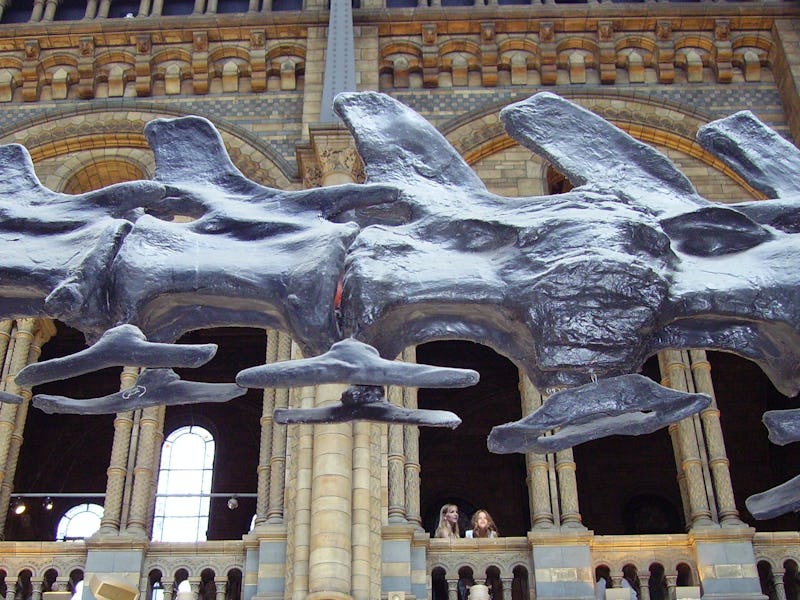Scientists Uncover Brazil's Largest Dinosaur, Austroposeidon
It was hiding in plain sight.

Rio de Janeiro’s Museum of Earth Sciences has discovered Brazil’s largest dinosaur, a titanosaur called Austroposeidon magnificus, measuring an estimated 82 feet long from tip to tail.
The massive beast was found right in the city’s museum, within the collection stacks. In fact, the scattered fragments of vertebrae just sat there, unprepared and unstudied for more than 60 years, after famed Brazilian paleontologist Llewellyn Ivor Price retrieved it from the field.
“We were waiting for the staff, for a laboratory that started from nothing to mature,” museum director Diogenes de Almeida Campos tells AFP. “We made a first effort with students about eight years ago and it didn’t succeed.”
The museum, built in 1908, is both fabulously ornate and in places sadly decrepit. Everyone loves dinosaurs, but the actual work of collecting and preparing fossils is extraordinarily time-consuming. Natural history museums everywhere struggle with funding to do their work, and it’s a particular challenge to find resources for specimens that are scientifically important, but not spectacularly well-preserved or complete.
Brazil’s Austroposeidon magnificus sure is magnificent, but in the scheme of South America’s prehistoric monsters, it’s still relatively small potatoes. In nearby Argentina, titanosaurs of the Argentinosaurus may have reached 130 feet in length.
Estimating sauropod size is a tricky business, since many of these animals are only known from a few bones. The death of a large animal would have been a bonanza for scavengers, and it would have been exceedingly rare for a natural event to cover the massive carcass quickly enough to protect it from predation and the elements. Best guesses, within a range of error, are arrived at through comparison with other species.
To complicate matters, there are still many unanswered questions about how quickly these giants grew, and whether they reached an adult size and stayed there or continued to grow until they died. It could be that when we call something the “largest,” we’re actually just looking at an old individual member of the species.
Among the largest dinosaurs known from a mostly-complete skeleton is Diplodocus carnegii, uncovered in Wyoming in 1898, and measuring about 85 feet. Estimates of sauropod lengths in the scientific literature go as high as 170 feet, although all of those above about 130 are generally unaccepted and controversial.
Tyrannosaurus rex, by comparison, grew as long as 40 feet. The biggest known carnivores, of the Spinosaurus genus, had distinctive elongated vertebrae that pushed out from their backs like a spiny sail. They may have reached lengths of 60 feet, and were surely a terrifying sight to behold.